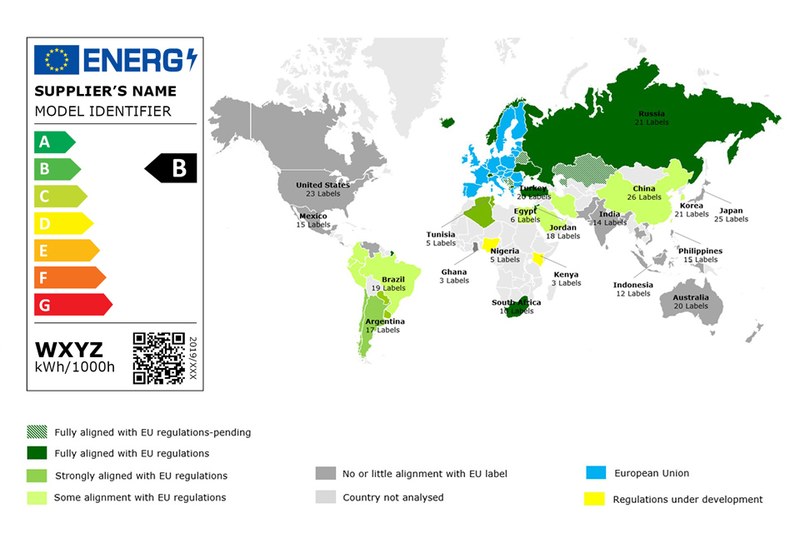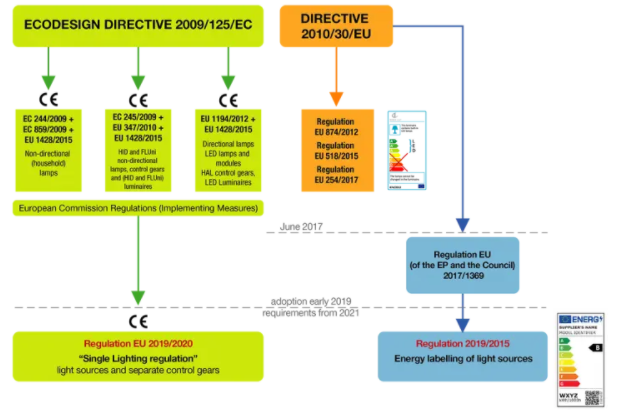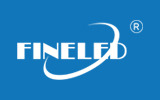- 2021-04-29
- share:
Due to the new EU regulations on ecodesign and energy labeling have been published by the European Commission, Two regulations (2019/2020/EU, Ecodesign) and (2019/2015/EU Energy Label) will come into force on 1 September 2021, repealing Commission Regulations (EC) No 244/2009, (EC) No 245/2009 and (EU) No 1194/2012 (Text with EEA relevance.)

EU REGULATIONS ON ECODESIGN
WHAT IS ECODESIGN?
Ecodesign can be understood as being an environmentally friendly product design having the aim of reducing the environmental impact caused throughout the entire product lifespan.
MODIFICATIONS 2019
The regulation EU 2019/2020 regulates minimum product efficiencies within the framework of the Eco-Design Directive and summarizes all previous regulations in this area.
These lamps are affected by the regulation:
- Halogen G9, G4 and GY6.35 as of 1 September 2023
- T8 linear fluorescent lamps (2ft, 4ft, 5ft) as of 1 September 2023 - Compact fluorescent lamps with integrated control gear (E27, E14, B22d) as of 1 September 2021
- T12 linear fluorescent lamps as of 1 September 2012
- Halogen R7s > 2700lm as of 1 September 2021
EU REGULATIONS ON ENERGY LABELLING
Color-coded efficiency scales visualize the energy consumption of products and help customers across Europe to purchase energy-efficient products.
The regulation EU 2019/2015 is a revision of the regulation concerning the energy label for lighting. It applies to all light sources with some exemptions.
Main changes:
- From 1 September 2021, energy classes A to G will apply again, but with new efficiency requirements.
- In the future, there will be a label for all light sources with the same efficiency requirements per class, but no more labels for luminaires with replaceable light sources or ballasts.
- Luminaires with fully integrated, i.e. non-replaceable, components are regarded as light sources and therefore will require an energy label again from 1. Sep. 2021.
- From 25 December 2019, a label will no longer be mandatory for luminaires
There is no doubt that this will have a decisive impact on the lighting sector. It was in any case a decision we were expecting, part of the broader circular economy implementation strategy.
FINELED ensures that environmental impact is reduced, with a product life cycle based on sustainability, ranging from the product idea to recycling.

Main Differences between New and Old Directives
- Added separate control gears, household appliances, and other products with lights in Scope.
Separate control gears are also in the scope of the directive, so need to check your current driver spec and make sure it conforms.
- The calculation of energy efficiency is changed from EEI to Ponmax, which added the factor of Ra and improves the requirement of energy efficiency.
- Added flicker test: SVM, Pst LM.
The flicker limited need to comply to: PstLM < 1.0 and SVM < 0.4
- Added the power consumption requirements of network standby.
The standby power needs to be within 0.5W, such as DALI, Bluetooth, Zigbee, KNX all kinds of smart lighting control, and lighting sensors.
- Added minimum energy efficiency for separate control gear at full-load.
- Switching cycle, starting time, and warm-up time test is deleted.
- 3600h durability test, which 3000 hours lighted on, the test time is reduced, but the requirement of luminous maintenance is improved.
Differences between EU 2019/2015 directive and EU 874/2012 directives:
- The calculation of energy efficiency level is changed from EEI to TM (lm/W), which is more intuitive.
- The classification of energy efficiency level is changed to: Class A ~ Class G.
- Higher energy efficiency requirements, Class A++ (EU 874/2012) is only equivalent to Class E (EU 2019/2015).

